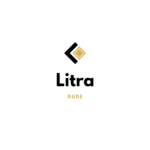A discourse is a form of communication — it refers to how we use language in speaking or writing to express ideas, thoughts, or information. It could be a conversation, a speech, an essay, a story, or even a debate.
It has a clear purpose, such as to inform, narrate, describe, or argue. It can be spoken (like a dialogue or lecture) or written (like an article or novel). Discourse usually has a structure — a beginning, middle, and end.
For examples:- A newspaper article is a discourse that informs. A story is a discourse that narrates. A debate speech is a discourse that argues.
There are four major forms of discourse in writing: Exposition, Narration, Description, and Argumentation. These are not always used in pure form. Often, a piece of writing may contain elements of more than one type, but one form usually dominates.
1. Expository Discourse
Expository writing explains or presents facts, ideas, or processes clearly. It includes things like definitions, classifications, instructions, and examples.
- Grouping means putting related things together.
- Classification breaks a large topic into smaller parts.
- Definition tells what something is and how it is different from other things.
- Illustration gives examples to explain ideas.
This form is used in textbooks, manuals, reports, and informative essays.
2. Narrative Discourse
Narrative writing tells a story or describes events in time order (chronological order). It usually has a beginning, middle, and end.
- A good narration builds interest and reaches a climax.
- It can be found in short stories, novels, and anecdotes.
- Sometimes, writers use flashback or start in the middle of events for special effects.
Narratives often aim to entertain or make a point through storytelling.
3. Descriptive Discourse
Descriptive writing gives a clear picture of a person, place, object, or scene.
- It focuses on how something looks, feels, smells, sounds, or tastes.
- The description can move from particular to general or from general to particular.
- A key feature of description is spatial arrangement – the way things are placed or appear in space.
Descriptions are used in creative writing, travel writing, and observation-based reports.
4. Argumentative Discourse
Argumentative writing presents a point of view and supports it with reasons and evidence.
- It looks at both sides of a topic – the pros and cons.
- Writers can take a clear stand, give evidence, or disprove the other side’s points.
- Good argumentation needs logical reasoning and strong evidence.
This form is found in essays, debates, editorials, and critical reviews.
Argumentative writing becomes powerful when the writer has thought deeply about the issue and has something meaningful to say.
Conclusion
Each form of discourse serves a different purpose. Understanding these forms helps in recognizing the structure of texts and also in improving one’s own writing. Most writing combines these forms, but knowing the dominant type helps in better comprehension and creation.
